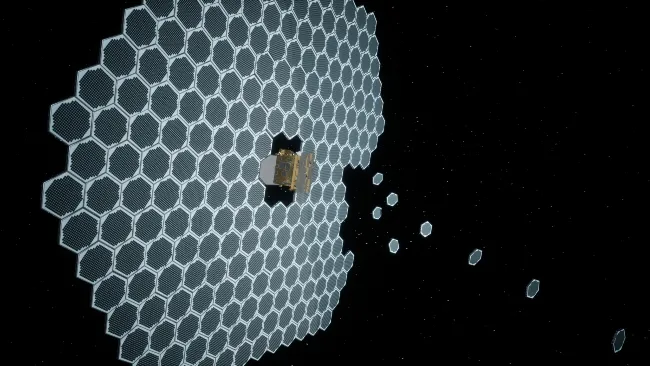
Basically, it could enable large-scale infrastructure being built in orbit. Backers include Mana Ventures, ATX Venture Partners and 8090 Industries.
The company describes its approach as flat-packed, modular systems for autonomously assembling infrastructure. In orbit. Rendezvous Robotics claims to solve the space construction bottleneck that rockets can’t address.
“No one has done this before — intelligent assembly in orbit, proven in space and now ready to scale,” said Joe Landon, company president.
“This is the technology that will enable antennas larger than football fields, reconfigurable systems for defense, orbital solar farms, and even data centers in space. Launch opened access to space; Rendezvous is building what comes next.”
Rendezvous Robotics
Rendezvous Robotics was co-founded by Dr. Ariel Ekblaw, who invented TESSERAE at MIT, together with Phil Frank and Joe Landon, an experienced space executive.
“It’s time to profoundly scale up our ambitions in orbit. We’re launching a new paradigm for in-space construction,” said Dr. Ariel Ekblaw. “This technology makes more room for humanity — space for science, for nations, for life itself.”
Autonomous
The autonomous construction would be via “swarm robotics”. These will assemble a structure directly in orbit using electromagnetic formation flying, said the company.
Previously, testing was on Blue Origin’s New Shepard, in parabolic flights. And also on two missions aboard the International Space Station (ISS) with NASA support.
Rendezvous Robotics will demonstrate its third test of technology on the ISS in early 2026, it says.
Colorado
Company headquarters are in Golden, Colorado. And members of the Rendezvous Robotics team have previously worked at SpaceX, Blue Origin, Lockheed Martin, and Nokia.
“The ISS is about the size of a four-bedroom house, costing over $100 billion to build,” added Frank. “It’s a remarkable achievement, but if we’re truly going to scale in space, we need a better way to build.”
See also: Cailabs building Optical Ground Stations with €57m funding




